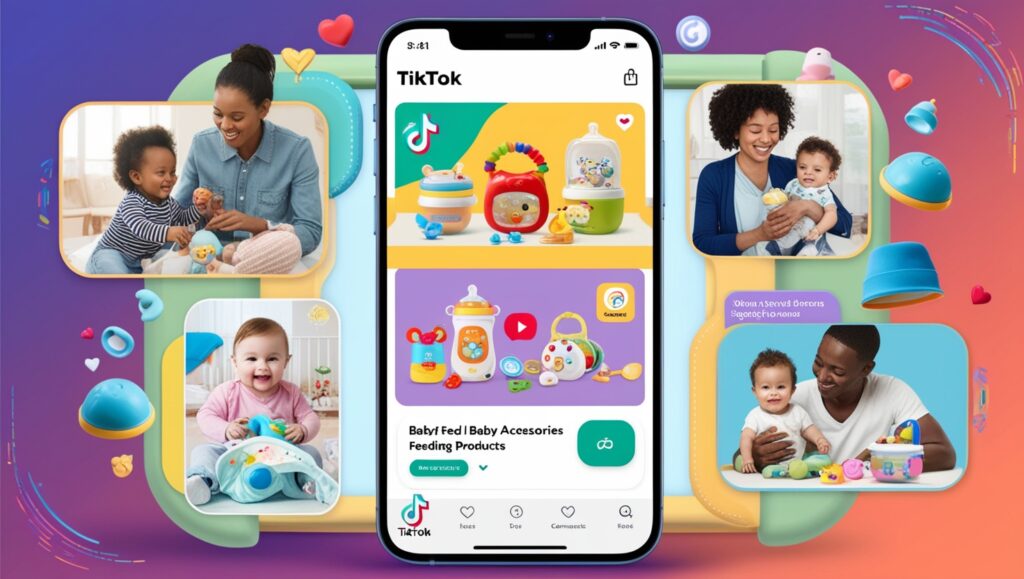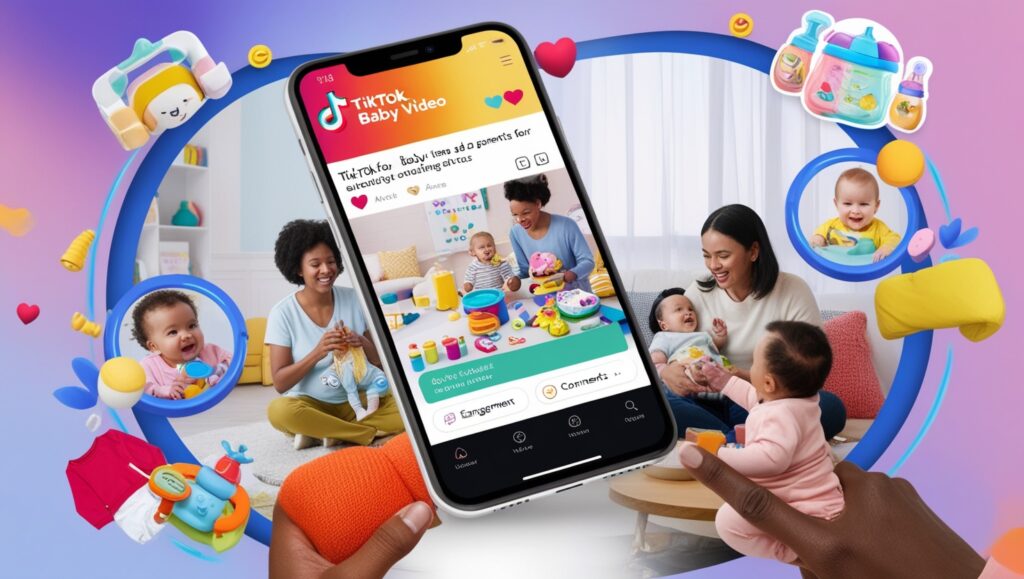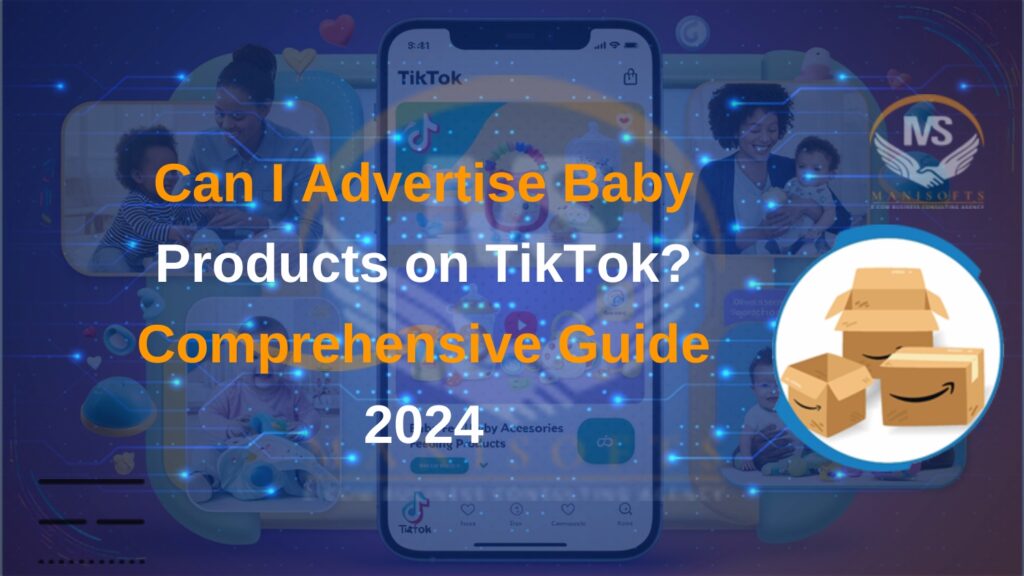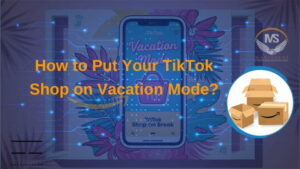Can I Advertise Baby Products on TikTok? Discover if you can advertise baby products on TikTok, including the platform’s policies, guidelines, and best practices for promoting baby items effectively and responsibly.
Introduction
Advertising baby products on TikTok can be an effective way to reach a vast audience, particularly young parents and caregivers who actively use the platform. However, before diving into promotions, it’s essential to understand TikTok’s advertising guidelines and policies regarding baby-related products. This includes ensuring your ads align with the platform’s standards, which focus on safety, compliance with legal requirements, and ethical advertising practices. By knowing the rules and crafting thoughtful content, you can successfully promote baby products on TikTok while maintaining trust with your audience.
Can I Advertise Baby Products on TikTok?
Yes, you can advertise baby products on TikTok, but there are a few important considerations to keep in mind before launching your campaign. TikTok, like other major social media platforms, has specific advertising policies in place to ensure that all ads are appropriate, compliant with local laws, and safe for their audience, which includes a significant number of younger users.
TikTok’s Advertising Policies
Before you begin advertising baby products on TikTok, it’s crucial to understand the platform’s advertising policies. These policies focus on several key areas:
- Compliance with Local Laws: Advertisements must adhere to the laws and regulations of the countries in which they are displayed. When promoting baby products, you need to ensure that all claims related to safety, health, and product quality meet the standards of the country or region in which you’re advertising.
- Product Safety: Since baby products are closely associated with the well-being of children, TikTok is likely to be particularly cautious with such ads. You’ll need to demonstrate that your products are safe for infants, toddlers, and young children. This includes complying with regulations on product labeling, safety warnings, and certifications required for baby products like toys, clothing, and skincare items.
- Ethical Advertising: TikTok emphasizes the need for ethical advertising, especially when it comes to sensitive product categories such as those targeting babies and children. Ads should avoid making misleading claims, exaggerating the benefits of the products, or playing on parental fears to drive sales.
Legal Considerations for Baby Products
When it comes to selling baby products, ensuring compliance with legal regulations is crucial for both the safety of consumers and the protection of your business. Baby products, which include everything from clothing and toys to food and furniture, are subject to stringent safety standards and regulations to protect the health and well-being of infants and toddlers. Here are key legal considerations to keep in mind when manufacturing, marketing, or selling baby products.

1. Product Safety Standards
Baby products must meet specific safety standards set by regulatory bodies such as the Consumer Product Safety Commission (CPSC) in the United States or the European Union’s General Product Safety Directive (GPSD). These regulations cover a wide range of baby products, including:
- Toys: Baby toys must comply with safety regulations regarding materials, choking hazards, and toxins such as lead or phthalates. In the U.S., toys must meet the standards outlined by ASTM International, particularly ASTM F963.
- Cribs, Strollers, and Other Baby Furniture: These items must adhere to strict safety regulations regarding structural integrity, the absence of sharp edges, and proper labeling. For example, cribs sold in the U.S. must comply with the CPSC’s 16 CFR Part 1219, which outlines crib safety requirements.
- Clothing: Baby clothing must comply with flammability standards and avoid harmful chemicals. In the U.S., the Flammable Fabrics Act (FFA) regulates clothing flammability.
Manufacturers and sellers are responsible for ensuring that the products they offer meet these safety standards. Non-compliance can result in product recalls, legal liability, and damage to your brand’s reputation.
2. Labeling Requirements
Proper labeling of baby products is critical to providing consumers with the necessary information to safely use the products. Labeling requirements may include:
- Safety Warnings: Products that pose potential hazards, such as small parts or choking risks, must carry clear safety warnings.
- Age Appropriateness: Baby products should indicate the recommended age range, especially for items like toys, to help parents make informed purchasing decisions.
- Instructions for Use: Complex products such as cribs, strollers, or baby carriers must come with detailed instructions for assembly and use to prevent accidents.
Additionally, labels must include details about the manufacturer or importer, the place of manufacture, and any certifications or compliance marks, such as the CE mark in Europe or the ASTM mark in the U.S., indicating compliance with safety standards.
3. Chemical Safety Regulations
Many countries have strict regulations governing the use of chemicals in baby products, given the heightened sensitivity of infants to toxins. Manufacturers must avoid using harmful substances such as:
- Phthalates and Bisphenol-A (BPA): Commonly found in plastics, these chemicals have been banned or heavily restricted in many regions for use in baby products, especially in food containers, bottles, and toys.
- Lead and Cadmium: These toxic metals, previously found in paints and certain materials, are banned in baby products due to their harmful health effects.
In the U.S., the Toxic Substances Control Act (TSCA) governs chemical safety, while the EU’s REACH Regulation (Registration, Evaluation, Authorization, and Restriction of Chemicals) ensures that products do not contain hazardous substances.
4. Food and Baby Formula Regulations
Baby food, formula, and other consumable products for infants are subject to strict regulations to ensure they are safe and meet nutritional standards. In the U.S., the Food and Drug Administration (FDA) regulates baby formula under the Federal Food, Drug, and Cosmetic Act. Manufacturers must:
- Ensure that the formula meets specific nutritional requirements.
- Follow Good Manufacturing Practices (GMP) to avoid contamination.
- Conduct premarket approval before introducing new formula products.
Similar regulations exist in other countries, with some regions requiring even more stringent oversight for consumable products for babies.
5. Product Recalls and Reporting
Manufacturers and retailers of baby products must be aware of product recall procedures. If a product is found to be unsafe or defective, the manufacturer is required by law to report the issue to the appropriate regulatory body, such as the CPSC in the U.S. or the European Commission’s RAPEX system. Failure to report defective products can result in severe legal penalties, including fines and legal action.
In the event of a recall, manufacturers must take immediate steps to inform consumers, retailers, and distributors, offering repairs, refunds, or replacements for the faulty products. Clear recall procedures must be in place to ensure that unsafe products are swiftly removed from the market.
6. Advertising and Marketing Compliance
When advertising baby products, companies must ensure that their marketing complies with regulations set by consumer protection authorities, such as the Federal Trade Commission (FTC) in the U.S. or the Advertising Standards Authority (ASA) in the U.K. Key considerations include:
- Truthful Claims: Any claims made about the safety, benefits, or effectiveness of baby products must be truthful and supported by evidence. For example, claims about the developmental benefits of a toy or the safety of a stroller must be backed by reliable data.
- Health-Related Claims: If marketing a baby product with health benefits, such as baby formula or skincare products, the advertising must comply with regulations on health claims. In the U.S., the FDA closely monitors these claims to ensure they are not misleading.
7. Intellectual Property Rights
Manufacturers and sellers of baby products must ensure that their designs, branding, and packaging do not infringe on the intellectual property rights of others. Protecting your own intellectual property, such as trademarks, patents, and copyrights, is equally important to prevent others from copying your designs or branding. It’s essential to conduct thorough research and obtain the necessary patents or trademarks to protect your product innovations.
Content Creation for Baby Product Ads
Creating compelling content for baby product ads requires a balance of creativity, emotional appeal, and clear communication of the product’s benefits. With parents being highly cautious about what they buy for their children, your content must resonate with their needs, build trust, and convey a sense of safety and reliability. Here’s how to create effective content for baby product ads that engages your audience and drives results.
1. Know Your Audience
Before creating content, it’s essential to understand your target audience, which likely includes parents, caregivers, and even grandparents. These consumers are typically concerned with factors such as product safety, quality, and how well the product can make their daily lives easier. Baby product ads should:
- Address concerns: Highlight how the product solves common parenting challenges, such as convenience, safety, or ease of use.
- Appeal to emotions: Parents are emotionally invested in their children’s well-being. Create content that connects with their desire to provide the best for their child.
- Speak in a relatable tone: Use language and messaging that parents can relate to. Avoid jargon and keep it simple yet heartfelt.
2. Emphasize Safety and Trustworthiness
Safety is the top priority when parents purchase baby products. Content for baby product ads must reassure parents that your product is not only useful but also safe for their child. Some strategies include:
- Certifications and standards: Mention any certifications or approvals from recognized authorities (e.g., FDA approval, organic certifications, safety standards like ASTM).
- Highlight materials and ingredients: If your product is made from non-toxic, hypoallergenic, or organic materials, emphasize this in your content.
- User testimonials: Showcase real parent experiences. User-generated content or reviews from parents who have used your product can significantly boost trust.
3. Showcase Real-Life Use Cases
Parents want to see how your product fits into their day-to-day life. Use real-life scenarios to demonstrate how your product can benefit their routines. This might involve:
- Video demonstrations: Show parents how the product works. Whether it’s a baby stroller, a food blender, or a diaper brand, demonstrate ease of use, key features, and how it solves a particular problem.
- Before-and-after examples: If applicable, illustrate how your product improves certain aspects of parenting, such as making feeding time easier or ensuring the baby sleeps more comfortably.
- Behind-the-scenes content: For more transparency, you can show how your products are made, highlighting the care and quality control processes that go into each item.
4. Leverage Storytelling
Storytelling is a powerful tool in advertising, especially for baby products. Craft a narrative that parents can connect with emotionally. For example:
- Parenting challenges: Begin by identifying a challenge many parents face, such as juggling a newborn’s feeding schedule. Then show how your product can alleviate that problem, creating a sense of relief and reassurance.
- Child development milestones: Tie your product to key moments in a child’s life, such as their first steps or first solid food. Connecting your product with these milestones makes it feel like a valuable part of their growth journey.
When telling these stories, make sure they are authentic and relatable. Overly staged or unrealistic content can alienate your audience.
5. Use Visual Appeal
Baby product ads rely heavily on visual appeal. Parents are drawn to clean, soft, and comforting imagery that conveys safety and care. To create visually effective content:
- Use high-quality imagery: Ensure that your visuals are bright, clear, and focused on the product in use. Show smiling babies, relaxed parents, and comforting environments to evoke positive emotions.
- Consistent branding: Ensure that your visuals align with your brand’s overall look and feel. Soft pastels, gentle tones, and minimalist designs work well for baby products, as they convey calmness and trust.
- Feature the product in action: If it’s a baby carrier, show a parent using it on a walk. If it’s a baby formula, display how easy it is to prepare. The visuals should clearly depict the product’s benefits in action.
6. Collaborate with Parenting Influencers

One of the most effective strategies for advertising baby products is collaborating with parenting influencers. These influencers have established trust with their audiences, making them ideal partners for promoting your products.
- Product reviews: Send your product to influencers for them to try and review honestly. Their recommendations often carry more weight than traditional ads.
- Sponsored content: Work with influencers to create sponsored posts that showcase your product in a natural setting. Whether it’s a parenting blog post or a TikTok video, influencers can present your product to their audience in a relatable, authentic way.
- Giveaways: Hosting giveaways with influencers is a great way to drive engagement and create excitement around your product. Parents love to participate in these promotions, which also helps boost your product’s visibility.
7. Use Engaging Formats
When creating content for baby product ads, use a variety of formats to keep your audience engaged. Different formats can appeal to various segments of your audience and help communicate your message in unique ways:
- Short-form video content: Platforms like TikTok and Instagram are ideal for short, engaging videos. Create quick, snappy clips that highlight key features of your product in action.
- Carousel ads: Use carousel ads on platforms like Instagram or Facebook to show multiple angles or uses of your product. This works well for products with multiple features or variations, such as baby strollers or clothing sets.
- Interactive content: Polls, quizzes, and interactive videos can help engage parents more actively. For instance, a quiz that helps parents choose the best baby product based on their needs can be both informative and engaging.
8. Optimize for Mobile
Many parents browse social media, search for products, and shop using their mobile devices. Ensure your ads and content are optimized for mobile viewing:
- Mobile-friendly landing pages: If your ad leads to a product page, make sure that it’s mobile-optimized, with fast loading times and easy navigation.
- Clear calls to action (CTA): Include a strong yet simple CTA that is visible and easy to tap on a mobile screen, such as “Shop Now” or “Learn More.”
Ad Formats Suitable for Baby Products
When advertising baby products, it’s essential to choose the right formats to capture the attention of parents and caregivers. Here are some ad formats that work particularly well for promoting baby products:
1. Social Media Ads
Platforms like Facebook, Instagram, and Pinterest allow advertisers to reach a highly targeted audience of parents. Visual storytelling through images or short videos can showcase how baby products fit into the daily life of parents and their little ones. Instagram Stories or Reels are great for quick, engaging content that highlights the product’s benefits.
2. Influencer Marketing
Collaborating with parenting influencers can create authentic recommendations that resonate with parents. Sponsored posts or product reviews on YouTube, Instagram, or TikTok by trusted influencers can give baby products the credibility they need. Parents often turn to influencers for advice and product suggestions, making this a valuable ad format.
3. Video Ads
Video ads are highly effective for demonstrating baby products in action. Whether it’s a stroller or a new feeding product, videos can show parents how the item works, its features, and the benefits it provides. Platforms like YouTube, Facebook, or even TikTok allow for short and long-form video advertising, giving brands flexibility in their messaging.
4. Search Engine Ads
Pay-per-click (PPC) ads on Google or Bing can help brands reach parents searching for specific baby products or solutions. By using keywords related to baby care, safety, or developmental products, these ads can be strategically placed to capture the attention of new or expecting parents looking for recommendations.
5. Banner Ads
Banner ads on parenting blogs, forums, or apps can help increase visibility for baby products. Display ads with appealing visuals of cute baby-related imagery, paired with enticing offers, can grab attention quickly. These ads should be placed where parents are likely to spend time seeking advice or product information.
6. Native Ads
Native ads blend into the content that parents are already consuming, such as on parenting websites or mobile apps. These ads appear more naturally and don’t feel as intrusive, which can lead to higher engagement. For example, a native ad about baby products could appear in an article discussing parenting tips or baby essentials.
7. Email Marketing
Targeted email campaigns to parents can offer personalized promotions, product recommendations, or tips. Emails with eye-catching visuals and offers can drive sales, especially if they include discounts on baby products or bundle deals that appeal to cost-conscious parents.
8. Product Sampling and Review Ads
Encouraging product reviews or offering free samples through ads can be effective. Parents tend to trust peer reviews and recommendations, so giving potential customers a chance to try a product or read trusted reviews can help drive purchases.
Call to Action
Ready to Automate Your TikTok Shop?
Managing your TikTok shop doesn’t have to be a hassle. With our TikTok Shop Automation services, we handle everything from setting up your shop, managing orders, to running optimized ads that drive sales—all automatically! Save time, reduce manual effort, and watch your shop grow effortlessly.
Click here to discover how our TikTok Shop Automation can help you streamline your business and boost your revenue!
FAQ’s
What should I consider when creating TikTok ads for baby products?
When creating ads, focus on demonstrating how your product solves a common problem or makes parenting easier. Use relatable, authentic content with visual appeal, as well as short, engaging clips that highlight the product’s features.
Do I need a large budget to advertise baby products on TikTok?
TikTok advertising can be flexible depending on your budget. While a larger budget may help you reach more people, even smaller budgets can be effective when targeted properly and paired with creative, engaging content.
Can I collaborate with influencers to promote baby products on TikTok?
Yes, influencer marketing is very popular on TikTok. Collaborating with family or parenting influencers can help boost credibility and reach for your baby products, as their followers trust their recommendations.
Are there any restrictions on baby product ads on TikTok?
While you can advertise baby products, you must comply with TikTok’s advertising guidelines, which may include restrictions on certain types of content or claims. Always ensure your ads are appropriate and truthful.
How can I measure the success of my baby product ads on TikTok?
TikTok provides analytics tools that allow you to track engagement, impressions, clicks, and conversions. You can use these insights to measure the effectiveness of your ad campaigns and make adjustments as needed.
Conclusion
TikTok offers a dynamic platform for advertising baby products, allowing brands to engage with a vast audience, including parents and caregivers. With a variety of creative ad formats like short-form videos and influencer collaborations, businesses can effectively showcase their products in a relatable and engaging way. By utilizing TikTok’s targeting options, you can specifically reach individuals interested in parenting content. However, it’s important to ensure that your ads comply with TikTok’s guidelines and local regulations. With the right approach, TikTok can be a powerful tool for promoting baby products and building brand visibility.




